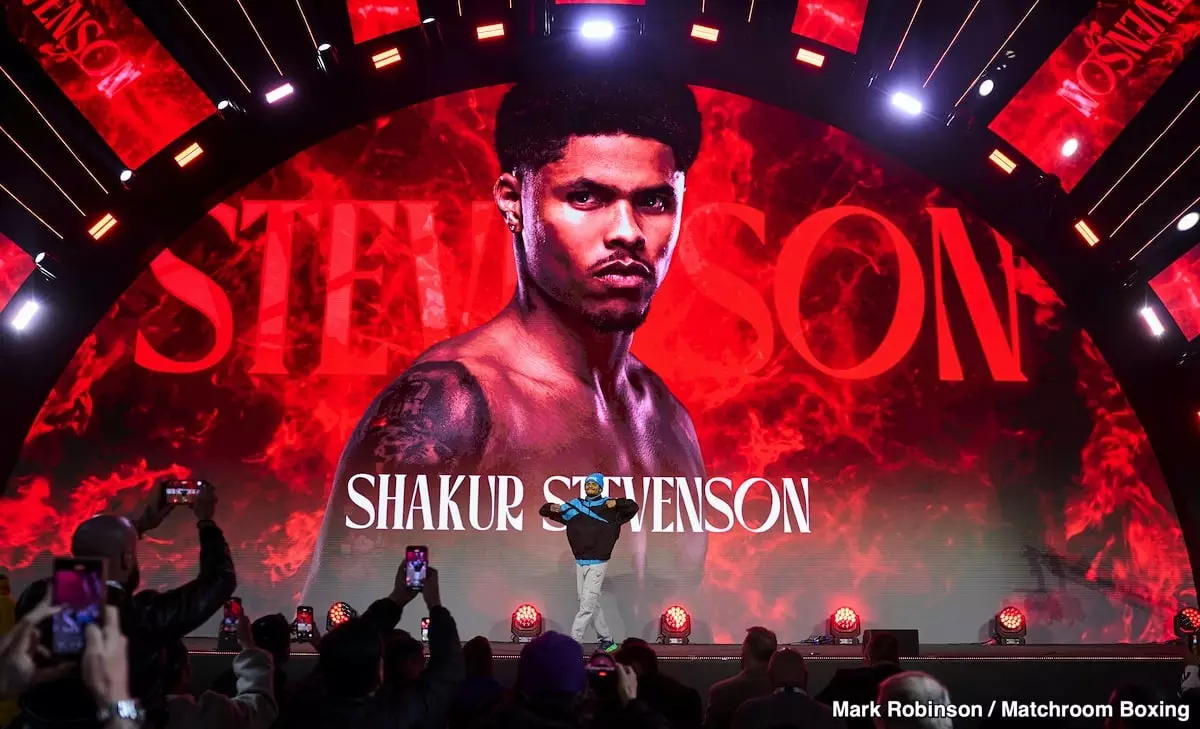In the world of boxing, the throes of ambition often clash with the harsh reality of evasive matchups. Shakur Stevenson, a talented young fighter, has found himself grappling with disappointment after Vasily Lomachenko, a fighter he once looked up to, chose not to engage in a meaningful bout with him upon Stevenson’s rise to the lightweight class. The longing for this match highlights not just Stevenson’s desire for a significant stepping stone in his career but also a generational gap in the sport that sometimes leads seasoned veterans to overlook emerging talents. For Stevenson, the sting of apparent avoidance runs deep, as he believed Lomachenko—a decorated champion with a commendable legacy—would have recognized the potential challenge he posed.
The Allure of Lomachenko
Lomachenko, a fighter whose resume boasts achievements across three weight divisions, carries the weight of expectation with every bout. He is celebrated not only for his technical prowess but also for revolutionizing how boxing is perceived in the modern era. However, the veil of nostalgia can also cloud judgment, making it easy for champions like Lomachenko to disregard rising fighters—particularly when popularity and financial incentives dictate choices. Stevenson’s sentiment is that Lomachenko may have seen him as an unworthy opponent instead of a worthy contender, primarily due to Stevenson’s relative obscurity at that time, contrasted with Lomachenko’s established star power.
Under the Radar: Stevenson’s Recent Struggles
The uphill battle for recognition in boxing requires more than just talent; it necessitates visibility. Stevenson’s recent outings, buried in the depths of undercards, serve as stark reminders of an uphill climb. His bout against Josh Padley in February 2023 did little to elevate his status in the broader realm of boxing fandom. One can infer that the environment surrounding Stevenson adds layers of frustration; he competes in a milieu where visibility translates to viability, yet he remains underappreciated, continuing to yearn for that pivotal fight that would compel spectators to pay attention.
Lomachenko’s Fading Glory
Critics would argue that Lomachenko has remained a formidable opponent despite the age-induced decline noted in his performance. While some of his physical attributes may have waned, his intelligence, strategy, and experience in the ring still afford him a competitive edge over many fighters. Stevenson himself has acknowledged that, despite potential disagreements with Lomachenko’s choices, he recognizes Lomachenko’s substantial career accomplishments. The challenge for Stevenson is not only to bolster his own arsenal but to convince the boxing community—and Lomachenko—that he is not just a passing phase but a serious threat.
Taking Charge of Fate
As Stevenson continues to assert himself, declarations of future matchups with elite fighters such as Gervonta “Tank” Davis remain a focal point of discussion. In conversations with media outlets, Stevenson expressed a stark difference in perception with Tank, who’s seen as the ultimate gatekeeper for success. Unlike the apparent disappointment with Lomachenko, Stevenson appears to understand the business of boxing—where a fight with Tank may come down to timing and mutual recognition, rather than outright avoidance. This sobering knowledge suggests a level of maturity in Stevenson’s approach, as he learns to navigate the landscape of boxing politics while yearning for the high-profile match that could define his career.
The Evolution of a Fighter
As Stevenson dissects these experiences, it becomes evident that the road ahead is not simply paved with wishful thinking and dreams of historic bouts. It demands a recalibration of focus, a commitment to enhancing his own skill set, and an unyielding resolve to push forward against the tide of challenges. The likes of Lomachenko may remain a distant objective, but they serve as motivation—a testament that even in a sport laden with politics and market interests, the true merit lies in being fit to compete at the highest level. Stevenson must transform his disappointment into action, using these setbacks as a catalyst toward forcing doors open rather than waiting for invitations.
In this ongoing saga, the nuances of power dynamics in boxing illustrate a larger narrative about ambition, respect, and the pursuit of greatness. For Stevenson, the lesson may well be that every setback leads to an opportunity for growth—if only he chooses to seize it.

